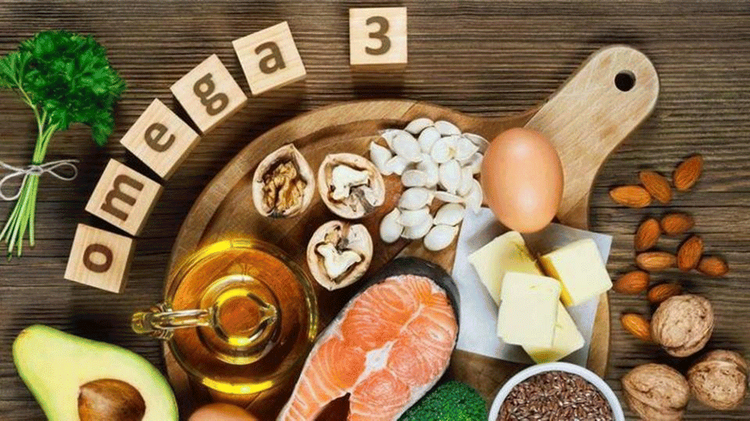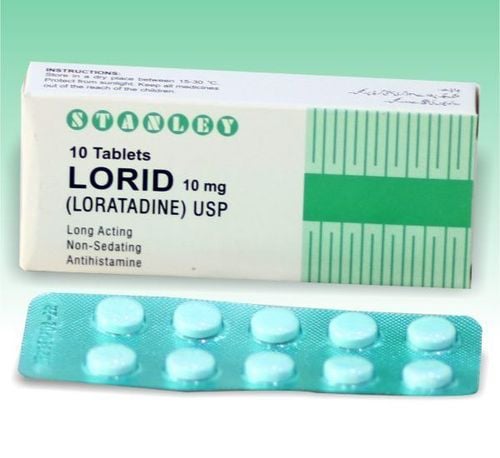This is an automatically translated article.
The article was consulted with Dr. Nguyen Thai Ngoc Chau - Neonatologist - Department of Pediatrics - Neonatology - Vinmec Phu Quoc International General Hospital.Did you know that children's brains develop best when they are provided with essential fatty acids in their diet. Because the human body cannot produce some fatty acids on its own, children need to get it through the food they eat every day. So which fatty acids are most important for children?
1. Children need fat to stay healthy
1.1. Fat classification Fats are divided into two main types: saturated fat and unsaturated fat:Saturated fat is mainly found in butter, milk, pork brain, animal fat... This type of fat It is one of the essential components for building tissues and organs of the body. Unsaturated fats are found abundantly in fatty fish, especially salmon. In particular, DHA (Acide docosahexaenoque - an omega-3 polyunsaturated fatty acid), EPA (Eicosapentaenoic - including Omega 3 and Omega 6) play a very important role in the central nervous system of children, helping to build and Children's brain development in the first 3 years of life. Every child needs fat in their diet for good health and overall growth. Healthy fats provide the nutrients needed for growth as well as the absorption and metabolism of some nutrients. Not stopping there, fats are important for the brain, they are used to build membranes around every cell in the body and also play a role in the formation of hormones.
Using the wrong fats (hydrating oils) that are high in trans fatty acids can cause children to have recurrent infections, impaired concentration in school, affect the metabolism of essential fatty acids. feebleness.
1.2. Importance of Essential Fatty Acids (Good Fats) Essential fatty acids (EFAs) are types of fats that are needed for normal immune and nervous system function. You cannot have a healthy immune system or brain without these fats. Essential fatty acids are called essential because we have them and our bodies cannot make them. Essential fatty acids are provided by the diet. There are many health problems associated with essential fatty acid deficiencies, including: infections, arthritis, asthma, eczema, hair loss, liver and kidney failure, growth retardation, vision problems or Loss of concentration in learning.
Essential fatty acids include omega-6 (linoleic acid) and omega-3 (linolenic acid). Both are polyunsaturated fats that help lower cholesterol, fight inflammation and keep the heart healthy. Most people consume more omega-6 fats than omega-3 fats. Some health professionals recommend that an imbalance of omega-6 versus omega-3 fats can weaken the immune system, trigger inflammatory responses in the body, and contribute to cardiovascular disease or diabetes. Type 2 diabetes 3 in the child's diet.

To get the most out of Omega 3's health benefits, experts recommend getting omega 3s from both plants and marine animals (especially salmon)
1.4. How much omega 3 and omega 6 children need Ages 1-3 years old:
7 grams omega-6 per day 0.7 grams, omega-3s per day Ages 4-8 years old:
10 grams, omega-6 0.9 grams per day, omega-3 per day Omega 6 fats are commonly found in the normal diet (sunflower, corn, soybean oil) so you just need to focus on making sure Make sure your child gets the right amount of Omega 3.
Parents also do not necessarily provide enough fatty acids every day for the baby. Instead, try to get enough medium fatty acids for a few days or a week for your baby.

Trans fats are often identified on the label as "partially hydrogenated oils" (Hydrogenation is a manufacturing process that converts unsaturated fats into saturated fats to extend shelf life) found found in many fried foods (such as french fries), baked goods (such as cookies, cakes, pizza dough), margarine, and fast foods. They are also found in some dairy and meat products. Hydrogenation changes the fatty acids in the oil, creating man-made fatty acids. These man-made fatty acids act as a poison to the body by interfering with the metabolism of essential fatty acids. Trans fats raise LDL ("bad") cholesterol and lower HDL ("good") cholesterol. They also increase the risk of developing cardiovascular disease, stroke, and type 2 diabetes.
Saturated fats mainly come from animal sources such as meat and dairy, fatty meats, lard, cream, butter and cheese and are usually solid at room temperature. They are also found in baked and fried foods and some plant foods, such as palm oil, palm kernel oil, and coconut oil. Saturated fat when used properly in moderate doses will help you absorb nutrients, boost metabolism, and help you curb cravings. This fat is also quite heat resistant, so it produces less harmful toxins to your health during cooking.
2. Essential fatty acids in children's diets
A child's need for EFAs depends on what he or she is eating. If a child eats a lot of hydrogenated oils or trans fatty acids (fast foods, snacks, cookies, crackers, and other junk foods) or doesn't get enough of some essential vitamins and minerals, their body may improper use of the EFAs the child is receiving. EFAs must be metabolized efficiently for the body to reap their benefits.
1 tsp flaxseed oil has 2,395 mg of omega 3 (you shouldn't use it for cooking but instead use it for other foods). salad dressing) 1 tablespoon ground flaxseed: 1,597 mg 1/4 cup English walnuts: 2,293 mg 1 tablespoon omega 3: fortified peanut butter 4,950 mg 1 teaspoon walnut oil: 466 mg 1 teaspoon wheat germ oil: 310 mg 1 teaspoon soybean oil: 300 mg 1 teaspoon canola oil: 411 mg 1 omega 3 fortified egg : 100 mg 300 mg in tofu 425 mg in salmon 1/2 cup soybeans (dried, cooked): 500 mg 1/2 cup cooked kale: 100 mg Milk, yogurt, orange juice. You should look for foods fortified with omega 3 such as peanut butter, milk, yogurt, orange juice, margarine, eggs. Omega 3 levels can vary depending on the label, so be sure to read the ingredient names carefully before purchasing.
Children can eat more or less depending on their age, taste and needs. Accordingly, you should estimate the balance of foods to provide optimal nutritional content for children.
Most of us have enough or excess of omega 6 (mainly in vegetable oils). So you just need to focus on providing omega 3 rich fats to ensure adequate nutrition for children. For example, just one teaspoon of canola oil contains about half of the omega-3s most children need in a day.
Sources of omega 6 (mainly from processed foods containing safflower, sunflower, corn and soybean oils)
1 teaspoon safflower oil: 3,360 mg 1 teaspoon sunflower oil: 2,966 mg 1 teaspoon corn oil: 2,400 mg 1 teaspoon soybean oil: 2,300 mg

Essential fatty acids play an important role in the overall development of children. However, the human body cannot make them on its own, so parents need to consult a diet and provide their children with the necessary nutrients.
As a key area of Vinmec Health System, Pediatrics Department - Vinmec International General Hospital always brings satisfaction to customers and is highly appreciated by industry experts thanks to the following advantages:
gathers a team of leading doctors and doctors in Pediatrics: including leading experts, with high professional qualifications (professors, associate professors, doctorates, masters), experienced, having worked in different hospitals. big hospitals like Bach Mai, 108.. The doctors are all well-trained, professional, have a heart - reach, understand young psychology. In addition to domestic pediatric specialists, the Department of Pediatrics also has the participation of foreign experts (Japan, Singapore, Australia, USA) who are always pioneers in applying the latest and most effective treatment regimens. . Comprehensive services: In the field of Pediatrics, Vinmec provides a series of continuous medical examination and treatment services from Newborn to Pediatric and Vaccine,... according to international standards to help parents take care of their baby's health from birth to childhood. from birth to adulthood Specialized techniques: Vinmec has successfully deployed many specialized techniques to make the treatment of difficult diseases in Pediatrics more effective: neurosurgery - skull surgery, stem cell transplantation. blood in cancer treatment. Professional care: In addition to understanding children's psychology, Vinmec also pays special attention to the children's play space, helping them to have fun and get used to the hospital's environment, cooperate in treatment, improve the efficiency of medical treatment.
Please dial HOTLINE for more information or register for an appointment HERE. Download MyVinmec app to make appointments faster and to manage your bookings easily.
Reference source: babycenter.com, healthychild.com













